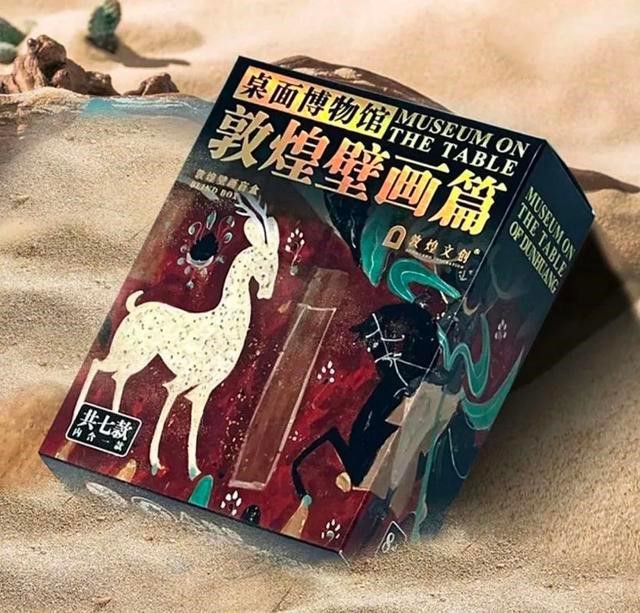Mystery boxes for Dunhuang lovers
The "Museum on the Table" Mystery Box, as a cultural and creative product of Dunhuang, home of the UNESCO Cultural Heritage Site the Mogao Grottoes, was recently published by Dunhuang Gongmei Cultural and Creative Co.

The "Museum on the Table" Mystery Box [Photo provided by Lanzhou's Qilihe district]
The mystery boxes contain pictures of seven copied works of murals from the Mogao Grottoes and Yulin Grottoes. All the paintings are sealed using the five-color sand grains of Mingsha Mountain and the Crescent Spring Scenic Area in Dunhuang, a national 5A-level tourist attraction.
Among these seven murals, the most familiar to the public is the "Deer King Jataka" in Cave 257 of the Mogao Grottoes. The story of the king being betrayed after rescuing a drowning man aims to persuade people to be kind. Painted in the Northern Wei Dynasty (386-534), this mural has a prominent position in China's art history and is one of the works well known by many Dunhuang lovers.
The "Water Moon Avalokiteshvara (Shuiyue Guanyin) " in Cave 2 of the Yulin Grottoes has been selected as the hidden style of the mystery boxes. It depicts the elegant Bodhisattva quietly watching the moon in the water, and is considered one of the best artistic works of the Xixia Dynasty (1038-1227).
The buyers can also get sand collection bottles for free. Accordingly, the sand grains of Mingsha Mountain seem to have five colors. It can change its color to red, yellow, green, white and black under direct sunlight.





 Print
Print Mail
Mail
